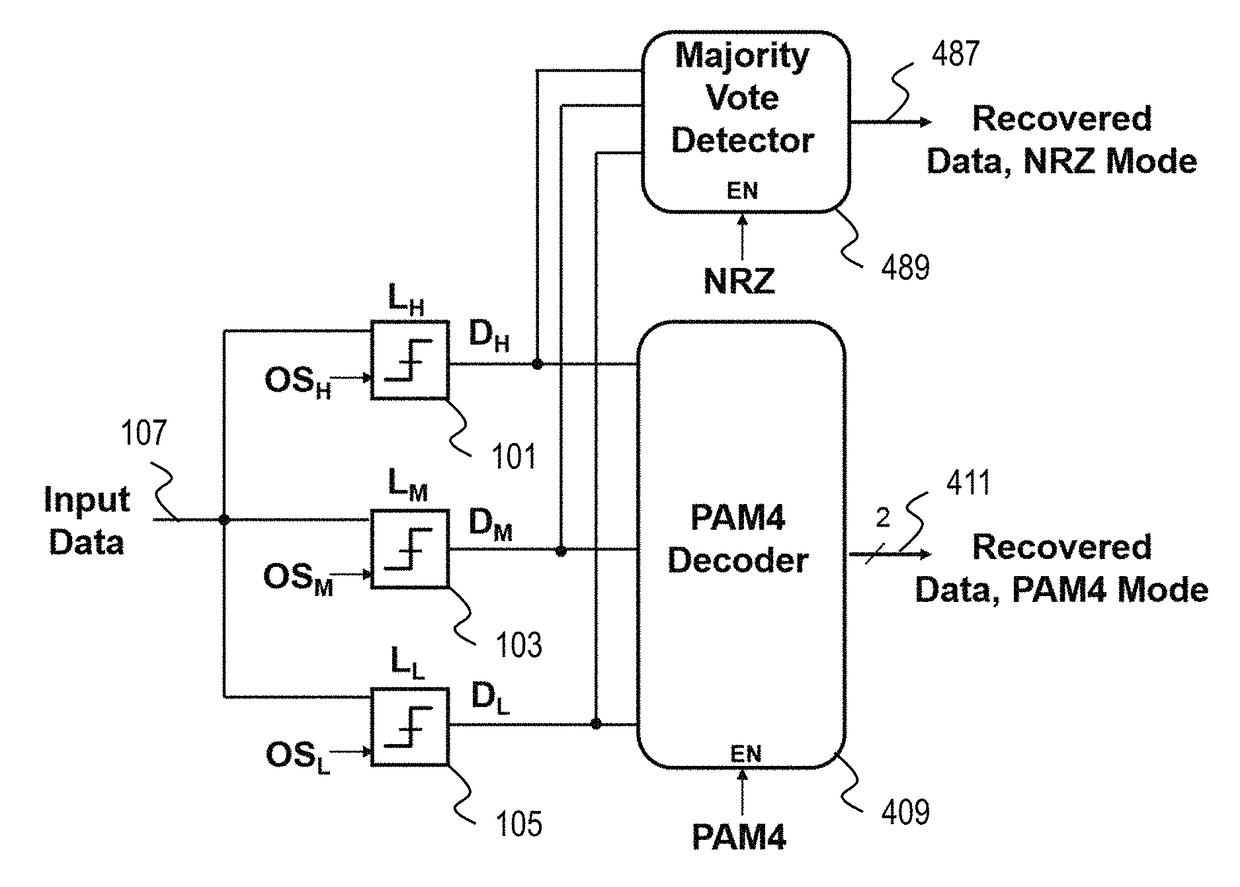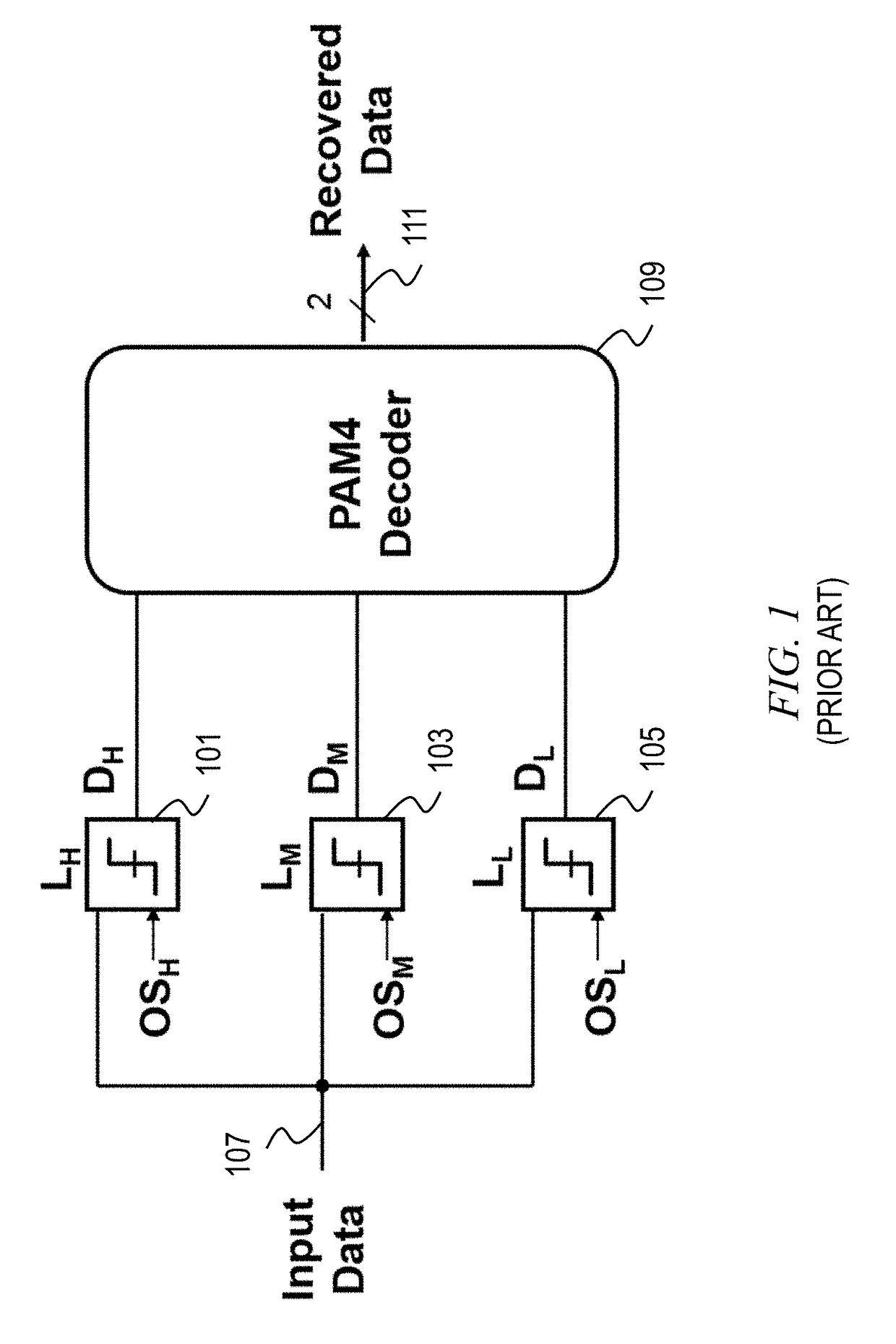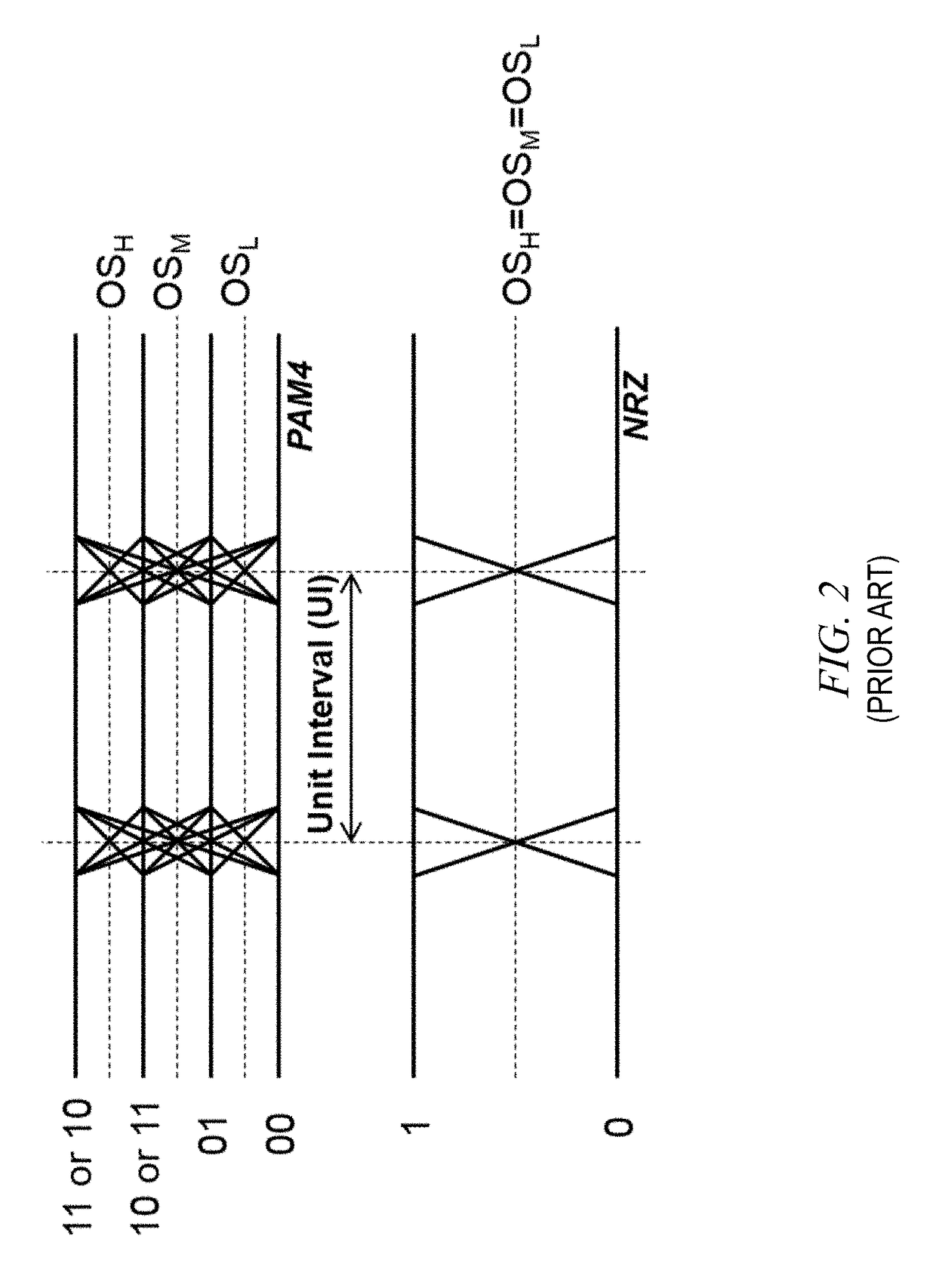Dual-mode non-return-to-zero (NRZ)/ four-level pulse amplitude modulation (PAM4) receiver with digitally enhanced NRZ sensitivity
a pulse amplitude modulation and four-level technology, applied in the field of electrical, electronic and computer arts, can solve the problem of limited sensitivity of single samplers, and achieve the effect of improving receiver robustness
- Summary
- Abstract
- Description
- Claims
- Application Information
AI Technical Summary
Benefits of technology
Problems solved by technology
Method used
Image
Examples
Embodiment Construction
[0024]For I / O receivers with high-sensitivity requirements when detecting NRZ data (particularly optical links), techniques which include decisions made by the other two unused samplers are possible. One or more embodiments improve the sensitivity of a serial receiver by using information detected by all samplers in a PAM4 serial receiver when operating in an NRZ mode. By using a majority vote of the decisions made by the three samplers, uncorrelated errors (e.g., due to input-referred thermal noise limitations of the samplers) can be reduced and RX sensitivity can be increased.
[0025]A sampler array in a typical PAM4 receiver is depicted in FIG. 1. The array includes samplers LH, LM, and LL, numbered, respectively, 101, 103, and 105. The input 107 to these samplers may be coupled to a transmission channel, or to the output of an analog amplifier or equalizer. The samplers are used to detect PAM4 data as depicted in the eye diagram at the top of FIG. 2. The PAM4 eye includes 4 levels...
PUM
 Login to View More
Login to View More Abstract
Description
Claims
Application Information
 Login to View More
Login to View More - R&D
- Intellectual Property
- Life Sciences
- Materials
- Tech Scout
- Unparalleled Data Quality
- Higher Quality Content
- 60% Fewer Hallucinations
Browse by: Latest US Patents, China's latest patents, Technical Efficacy Thesaurus, Application Domain, Technology Topic, Popular Technical Reports.
© 2025 PatSnap. All rights reserved.Legal|Privacy policy|Modern Slavery Act Transparency Statement|Sitemap|About US| Contact US: help@patsnap.com



